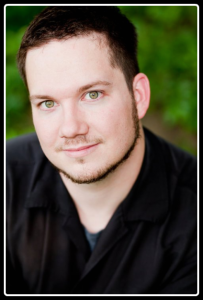 On Tuesday, I published the second book in my series. I posted the same little sales blurb in half a dozen different places, but around here I gave a little something extra. I told you about the process of writing the series, and my plans going forward.
On Tuesday, I published the second book in my series. I posted the same little sales blurb in half a dozen different places, but around here I gave a little something extra. I told you about the process of writing the series, and my plans going forward.
That’s not necessarily something I talk about a lot, because I’m always afraid of my own fickle nature. A 25-book series is going to be part of my life for a very long time, and there’s always the chance I’ll get tired of it. There’s always the chance I’ll run out of material, or just start hating my characters. So I hedge my bets, and I say, “long-running series” instead of “25-book series.”
Writing a TV Series as Novels
My job here is to talk about the writing process as it is, though. And this is part of it. I do want to write a 25-book series built strongly on the TV series model, and there’s no way to do that by accident. It has to be planned in excruciating detail, so I’m not using vague phrases like “long-running series” in the privacy of my own head.
I’ll come up with a quirky character on my drive to work. And then I immediately start browsing the spreadsheet in my head, trying to figure out exactly which of the 21 unwritten novels the character would best fit in.
Courtney wants to develop a social media story that develops over the course of a month in the form of blog posts, complete with a fake profile for the character, and probably even profiles for the character’s network of “friends.” Joshua has been talking with me about writing a story that’s not particularly aimed at religious folks, but works as a strong allegory (none too popular with traditional publishers).
I know some students in my program at OU who have put together and are selling a Choose Your Own Adventure e-book. Joe Konrath, famous proponent of digital self-publishing, has released one of those, too. The medium makes that easier than ever (both to write and to read).
Some of the most fun we ever have as writers are in these little “project novels.” It’s critical to have a good story, no matter your gimmick, but sometimes it’s the challenge or just the fun of a gimmick that gives a book the appeal we need to finish it.
The problem is, traditional publishers are conservative. It’s part of their economic model. By and large, traditional publishers want you to send them books that look pretty similar to the books that are selling well right now.
Amateur Publishing
That’s one of the big advantages of self-publishing. If I want to write a 25-book sci-fi series broken up into 5 seasons, I can do that. I don’t have to sell the idea to anybody. If Courtney’s weird story idea becomes a reality, she’ll be able to publish it. She’ll be able to find her own audience. Same for Joshua’s allegory.
Of course, this has always been the case. It’s always been possible to self-publish, but the difference now is that the technology and the media available make it surprisingly easy to match traditional publishers in terms of distribution and professional presentation.
That’s something Joshua and I were discussing last week: packaging and presentation. In the middle of a conversation on the topic, I said:
I think to be a really good writer, you need to be self-published. You need to craft the medium, as well as the message.
Up until now, I’ve been talking about the “get to.” I get to publish my TV series in novel format. Courtney gets to publish her social media story.
But there’s more to it. There’s a “need to.” All these new tools make it possible for you to make your little amateur novel look as good as one produced by Random House, and that’s an unprecedented and overwhelmingly cool opportunity for authors.
It’s also a responsibility. They’ve been telling us for years that it’s our job to build our platforms now. Now I’m ready to take that one step further. It’s our jobs to build our own media.
Come back tomorrow, and I’ll tell you just how Consortium Books goes about doing that.





